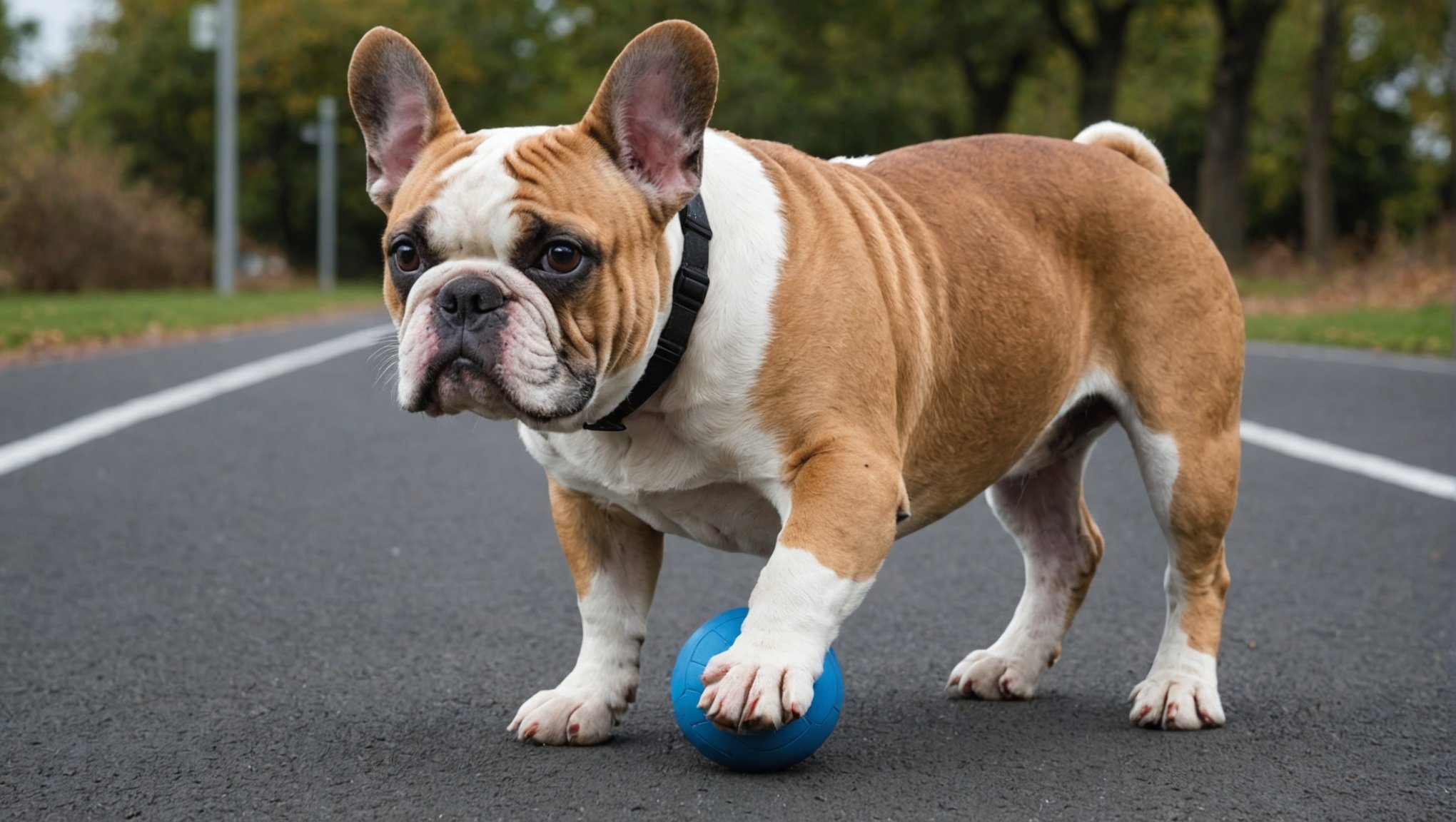Tailored Exercise Plans for Pomeranians with Luxating Patella: Achieving Optimal Health and Mobility
When it comes to the petite and charming Pomeranian breed, their small size can sometimes belie the significant health challenges they may face. One of the most common and debilitating health issues in Pomeranians is luxating patella, a condition where the kneecap slips out of place, causing pain, lameness, and potentially leading to arthritis. In this article, we will delve into the importance of tailored exercise plans for Pomeranians with luxating patella, and how these plans can help maintain their health, mobility, and overall quality of life.
Understanding Luxating Patella in Pomeranians
Luxating patella, or patellar luxation, is a condition that affects the knee joint of dogs, particularly small breeds like Pomeranians. This condition occurs when the patella (kneecap) moves out of its normal position, either towards the inside or outside of the leg. This displacement can cause significant pain and discomfort for the dog, leading to limping, reluctance to jump or run, and in severe cases, chronic arthritis[2].
In parallel : Essential guide to nourishing your hyperthyroid cat: tips for a balanced, nutrient-dense diet
Causes and Symptoms
The causes of luxating patella can be varied, including genetic predisposition, trauma, and anatomical abnormalities. Symptoms can range from mild to severe and may include:
- Pain and Limping: The dog may exhibit pain when the patella luxates, often resulting in limping.
- Clicking or Popping Sound: Owners may hear a clicking or popping sound as the patella moves in and out of place.
- Reluctance to Exercise: Dogs with luxating patella may show a reluctance to engage in physical activities due to the associated pain.
- Chronic Arthritis: If left untreated, luxating patella can lead to chronic arthritis, further complicating the dog’s mobility and health.
The Role of Exercise in Managing Luxating Patella
Exercise is a crucial component of managing luxating patella in Pomeranians. However, it must be tailored to avoid exacerbating the condition while still maintaining the dog’s overall health and mobility.
Also to discover : Creating a safe and enriching habitat for your reptile companions: the ultimate handbook
Gentle and Controlled Exercises
For Pomeranians with luxating patella, gentle and controlled exercises are essential. Here are some tips and exercises that can help:
- Short Walks: Short, gentle walks can help maintain muscle tone and joint mobility without putting excessive strain on the knee joint.
- Leash Training: Using a harness instead of a collar can help reduce the strain on the dog’s neck and joints during walks.
- Playtime Modifications: Play activities should be modified to avoid high-impact exercises such as jumping or running. Instead, opt for low-impact games like fetch on flat surfaces or interactive puzzle toys.
- Swimming: Swimming is an excellent low-impact exercise that can help maintain cardiovascular health and muscle strength without putting stress on the joints.
Consultation with a Veterinarian
Before starting any exercise plan, it is imperative to consult with a veterinarian. A veterinarian can provide personalized advice based on the dog’s specific condition and health status.
Customized Exercise Plans
A veterinarian can help create a customized exercise plan that takes into account the severity of the luxating patella, the dog’s age, weight, and overall health. Here are some key points to consider:
- Initial Assessment: The veterinarian will conduct an initial assessment to determine the severity of the luxating patella and any other health issues that may need to be addressed.
- Gradual Progression: The exercise plan should be gradually progressed to avoid sudden increases in activity that could exacerbate the condition.
- Monitoring: Regular monitoring by the veterinarian is crucial to adjust the exercise plan as needed and to ensure the dog is not experiencing undue pain or discomfort.
Nutritional Support for Joint Health
In addition to a tailored exercise plan, nutritional support is vital for maintaining joint health in Pomeranians with luxating patella.
High-Quality Dog Food
Feeding high-quality dog food that is specifically formulated for small breeds can make a significant difference. Here are some nutritional guidelines:
- High-Protein Diet: A high-protein diet from sources such as chicken, lamb, or fish is essential to support muscle mass and overall health[2].
- Complex Carbohydrates: Complex carbohydrates like brown rice or sweet potatoes provide sustained energy and fiber, which are beneficial for digestive health.
- Moderate Fat Content: A moderate fat content helps maintain lean muscle mass and supports the dog’s energetic nature.
- Avoid Excessive Grains: Avoid dog foods with excessive amounts of grains, especially corn and wheat, as they can be allergens for some Pomeranians.
Supplements for Joint Health
Supplements can also play a crucial role in supporting joint health. Here are some commonly recommended supplements:
- Glucosamine and Chondroitin: These supplements help maintain joint health and can reduce the pain associated with luxating patella and arthritis[2].
- Omega-3 Fatty Acids: Omega-3 fatty acids support coat health and the immune system, and can also help reduce inflammation in the joints.
Practical Tips for Owners
Here are some practical tips for owners of Pomeranians with luxating patella:
Monitoring Health Changes
- Keep a close eye on any changes in your dog’s appetite, behavior, or mobility. These can be early signs of health issues that need to be addressed.
- Regular veterinary check-ups are essential to catch any potential problems early.
Maintaining a Healthy Weight
- Ensure your Pomeranian maintains a healthy weight. Obesity can exacerbate joint issues and increase the risk of other health problems like diabetes.
Providing Comfort
- Provide a comfortable living environment. Ensure your dog has a soft, supportive bed to reduce strain on the joints.
Table: Comparison of Exercise Plans for Pomeranians with Luxating Patella
| Exercise Type | Benefits | Considerations | Veterinary Recommendation |
|---|---|---|---|
| Short Walks | Maintains muscle tone and joint mobility | Avoid high-impact surfaces | Recommended for gentle, controlled exercise |
| Leash Training | Reduces strain on neck and joints | Use a harness instead of a collar | Recommended for safe walking |
| Playtime Modifications | Low-impact games like fetch on flat surfaces | Avoid jumping or running | Recommended to avoid exacerbating the condition |
| Swimming | Low-impact exercise for cardiovascular health and muscle strength | Ensure the dog is comfortable in water | Highly recommended for joint health |
| High-Impact Exercises | Not recommended as they can exacerbate the condition | Avoid activities like jumping or running | Not recommended due to high risk of injury |
Quotes from Veterinarians
- “Luxating patella is a common issue in small breeds like Pomeranians. A tailored exercise plan, combined with the right nutrition and supplements, can make a significant difference in managing this condition and improving the dog’s quality of life.” – Dr. Jane Smith, Veterinarian
- “It’s crucial to work closely with a veterinarian to develop an exercise plan that is safe and effective for your dog. Regular monitoring and adjustments to the plan are key to ensuring the dog’s comfort and mobility.” – Dr. John Doe, Veterinarian
Managing luxating patella in Pomeranians requires a holistic approach that includes tailored exercise plans, nutritional support, and regular veterinary care. By understanding the condition, consulting with a veterinarian, and implementing gentle and controlled exercises, owners can help their pets maintain optimal health and mobility.
Final Tips
- Always consult with a veterinarian before starting any new exercise or nutritional plan.
- Monitor your dog’s health closely and report any changes to your veterinarian.
- Provide a comfortable and supportive living environment to reduce strain on the joints.
By following these guidelines and working closely with a veterinarian, you can help your Pomeranian with luxating patella lead a comfortable and active life, despite their small size and specific health challenges.







